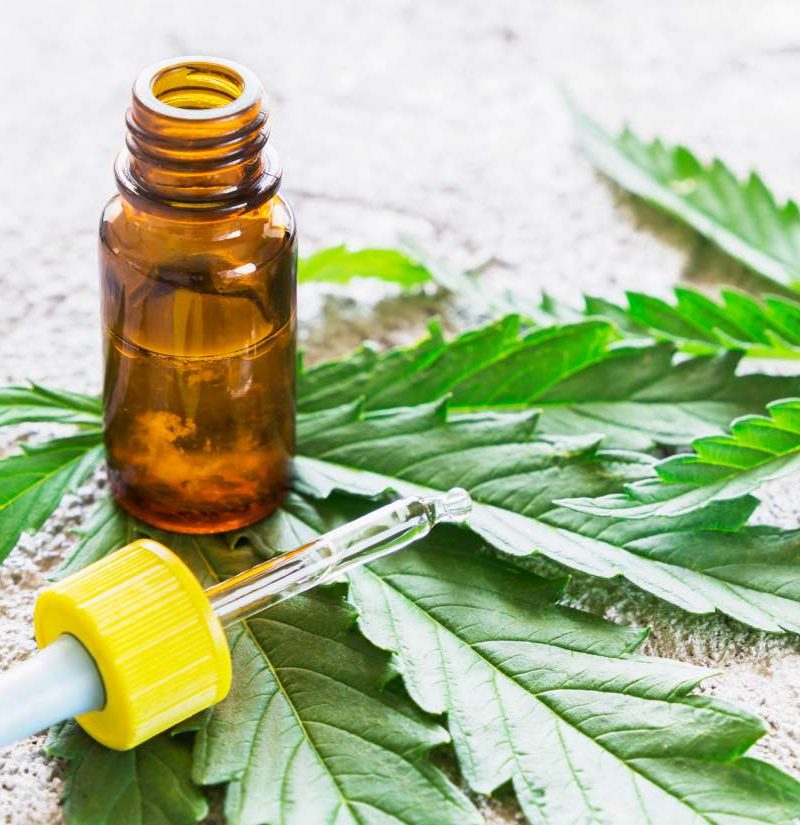Cannabis is a genus of plant that contains three varieties: Cannabis indica, Cannabis sativa, and Cannabis ruderalis. It is a flowering herb with a long, rich history of medicinal, recreational, nutritional, and industrial use throughout the world. Recently, there has been a surge of attention cannabis, and people are interested in seeing the plant legalized for medicinal and recreational purposes. Many people are excited about the possibility of increased research on the medicinal uses and safety of cannabis, which legalization would make more accessible.
History of Cannabis
The cannabis plant originated in central Asia, where people first discovered it at least 12,000 years ago, during the early days of agriculture. Initially, they would use cannabis by eating the nutritious seeds and creating rope and textiles from the hemp stalks. However, the first written record of medical cannabis use in China was nearly 5,000 years ago.
Over the years, cannabis use spread across the continent and then the world, and many peoples continued to use it to treat a variety of ailments. Ancient Egyptians used cannabis to treat hemorrhoids and ease childbirth. Evidence from India shows documents dating back thousands of years praising its ability to easy anxiety and increase happiness. There is evidence in many parts of the world of medicinal use of cannabis, but even more evidence of industrial use, with importance placed on hemp textiles.
A book published in Medieval England known as the Old English Herbarium included several uses for cannabis, such as a poultice made of pounded hemp to dress wounds, a liquid hemp concoction used to ease ‘pain of the innards’, and a cannabis and fat mixture applied to the breast to ease soreness in women who had just given birth.
Throughout the 19th century, it was a popular remedy in the United States. Consumers could purchase cannabis tinctures and other preparations from pharmacies, and use these products to treat a range of ailments. These included gastrointestinal diseases, mental illnesses, nausea, headaches, insomnia, asthma, epilepsy, menstrual cramps, and many other symptoms, diseases, and disorders.1
However, by the 20th century, cannabis began to fall out of favour in North America. In 1923, Canada was one of the first countries to add cannabis to its list of prohibited drugs, leading to a 95-year prohibition on cannabis, ending upon legalization in October 2018.
Throughout the mid 20th century, researchers found and isolated a variety of cannabinoids, allowing them to understand more about the function of cannabis. However, it wasn’t until 1988, when they discovered a unique receptor in the human body that responded to cannabis, which is part of what we now call the endocannabinoid system, that they truly began to understand the unique nature of cannabis. Subsequent research on this receptor led to the 1992 discovery of anandamide, a neurotransmitter that activated some of the same receptors as cannabis. In 1993, researchers discovered another receptor in the endocannabinoid system, as well as more of these unique neurotransmitters.
In 2001, Canada introduced the Medical Marijuana Access Regulations, allowing individuals with certain diseases to access government-issued cannabis if their physician recommended it and they met established criteria. In 2003 and 2004, two separate bills were introduced by the federal government with the goal of decriminalizing small amounts of cannabis, but neither of these succeeded.
While public opinion of cannabis has gone through many shifts, in recent years, public interest in Canada has continued to grow. With legalization of cannabis in Canada as of 2018, it is hopeful that we will see more research, dialogue, and deeper understanding of how cannabis works to help people.
Cannabinoids and the Endocannabinoid System
Cannabis is composed of many different substances, and more than 100 of these are what we call cannabinoids; these, possibly along with other compounds known as terpenes, are responsible for the effects of cannabis. Cannabinoids most likely work by interacting with a complex system in the body called the endocannabinoid system (ECS). Our bodies naturally produce a family of neurotransmitters called endocannabinoids, which interact with receptors located in the brain, muscles, fat, and digestive tract. These receptors are called cannabinoid receptor type 1 (CB1) and cannabinoid receptor type 2 (CB2).
Scientists only recently found evidence of the ECS when they discovered CB1 in 1988, so research is still ongoing into exactly how it functions. However, most data find that it helps our bodies regulate pain, mood, appetite, gastrointestinal motility, memory, emotions, stress response, immune function, and more. When a person ingests the plant-based cannabinoids in cannabis, which are similar molecular shapes to endocannabinoids, they fit into the CB1 and CB2 receptors and trigger reactions that result in either very high or very low levels of specific neurotransmitters, which the cells of the nervous system, as well as other systems in the body, use to communicate with each other.
The ECS is very important when it comes to medicinal cannabis, because changes in how the ECS functions might have an important relationship to the pathology of chronic conditions and could be tied to the efficacy of cannabinoids.
The two most important cannabinoids, and the two that typically compose the majority of cannabinoids in cannabis, are delta-9-tetrahydrocannabinol (THC) and cannabidiol (CBD).
THC, the most recognized cannabinoid, is associated with reduced nausea and pain, increased appetite (the munchies), and psychological effects such as relaxation, euphoria, and altered sensory perception, which are responsible for making users feel ‘high’ or intoxicated. THC is also the primary source of the negative psychological effects associated with cannabis use, such as irritability, anxiousness, and paranoia.
CBD does not seem to produce intoxicating effects (non-psychotropic) but it is responsible for some of the plant’s sedative effects. CBD can help reduce convulsions, nausea, and inflammation. It might also lessen some of the negative symptoms associated with THC, especially anxiety and paranoia.
One Plant, Many Uses
When we develop cannabis to grow tall and strong with thick fibrous stalks that are low in THC we typically refer to it as hemp; people mostly use hemp seeds for food and its fibres for industrial purposes, such as for creating textiles and building materials, or for extracting CBD for medicine. When we breed it to have lush leaves and flowers that are high in cannabinoids, we use the flower buds for medicinal or recreational purposes. Some people refer to cannabis used this way as marijuana.
Typically, Cannabis ruderalis is very low in cannabinoids, and only used for hemp. Cannabis indica and Cannabis sativa can be grown for either industrial or medicinal/recreational uses, depending on how the plant is cultivated. Plant breeders have created innumerable different strains of cannabis, each of which has a different combination of cannabinoids, with variable potency results. Successful medical use of cannabis involves finding an ideal strain, representing different ratios of THC and CBD, for each patient’s needs.
Medicinal Uses of Cannabis
The list of conditions that cannabis is purported to treat or cure is very long, and continues to grow, but the research is still lacking in many areas. This is largely due to cannabis being both stigmatized and illegal in most parts of the world for the past century, so research might increase as legalization becomes more commonplace. It is also difficult for researchers to conduct double-blind studies for most cannabis products because subjects might be able to determine whether they are on the active therapy or placebo.
However, current research indicates that some conditions may be clinically improved by cannabis use. These include inflammatory bowel disease,3 multiple sclerosis,4 neuropathic pain,5 nausea and vomiting caused by cancer or chemotherapy,6 pediatric seizure disorders,7 and a wide variety of other illnesses. Here, we will focus on gastrointestinal symptoms and conditions that might be ameliorated by cannabis.
Cannabis and IBD
Some research suggests that the ECS might play a role in gut health. Particularly, inflammatory bowel disease (IBD), including Crohn’s disease and ulcerative colitis, might be influenced in part by alterations in the ECS, as this system might modulate inflammatory responses.3 In addition, research shows that levels of anandamide, an endocannabinoid, are much lower in the inflamed gut mucosa of those with IBD than in healthy gut tissue.3 Early research on the effects of cannabis on IBD is quite promising, but we still have far to go before we can definitively say that cannabis is an effective treatment for IBD.
One retrospective study in Israel asked 30 patients with Crohn’s disease about their disease severity before and after using cannabis and found great improvements.8 They found that 70% of the patients experienced a decrease in Crohn’s disease symptom severity when using cannabis, and that many were able to reduce or eliminate the medications that they were using. For example, before using cannabis, each individual took some sort of prescription medication to treat their disease. When using cannabis, nine individuals were able to cease all prescription medication use. They also reported a drop in daily bowel movements from eight to five per person, as well as a slight decrease in the number of surgeries required.
Since this was a retrospective study, meaning it relied primarily on patient memory and subjective symptoms, the study isn’t as strong as a double-blind study would be. However, the changes in more objective measurements (such as surgery and prescription medication records) point to the possibility that cannabis was quite beneficial for these individuals. It should be noted that individual responses can vary. You should discuss your specific situation with your physician and pharmacist prior to stopping any medication you take for a chronic condition.
One prospective study provided 13 IBD patients (11 with Crohn’s disease, 2 with ulcerative colitis) who were not using cannabis with 50 g of cannabis to smoke as needed to relieve symptoms over the course of three months.9 After this time, all the patients had smoked the full 50 g, and they saw improvements in their health. The Crohn’s disease group’s Harvey-Bradshaw index scores (an index that rates Crohn’s disease symptoms) dropped from an average of 11.36 to 2.68 (great result), with the largest improvements in general wellbeing and abdominal pain. The subjects experienced significant improvement in pain, health perception, depression, social functioning, and ability to work. They also had an average weight gain of 4.3 kg over the three months (a health improvement), and a reduction in average number of daily liquid stools from 5.54 to 3.18.
These researchers support the idea that the benefits were the result of cannabinoids having anti-inflammatory, anti-motility, and analgesic effects. With only 13 participants, this study is too small to come to generalizations about most people, but it does show that cannabis might be effective for some individuals with IBD. The fact that the subjects knew they were taking the therapy may also have had an impact on their perception of improvement.
At this point, much research shows a possible benefit for individuals with IBD taking cannabis, but we still don’t know quite how it works. It might be limited only to pain relief and increased appetite, but it might also help by reducing inflammation. We need more research on the topic before we can know for sure how cannabis affects IBD.











